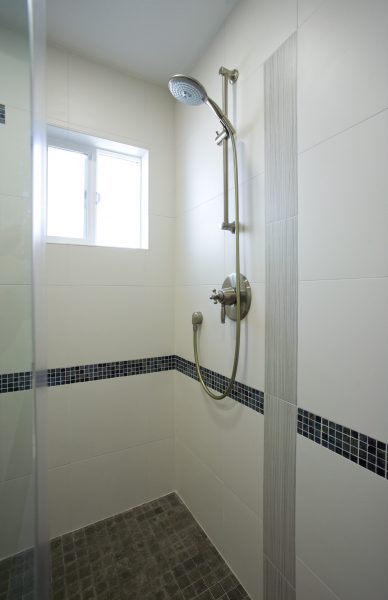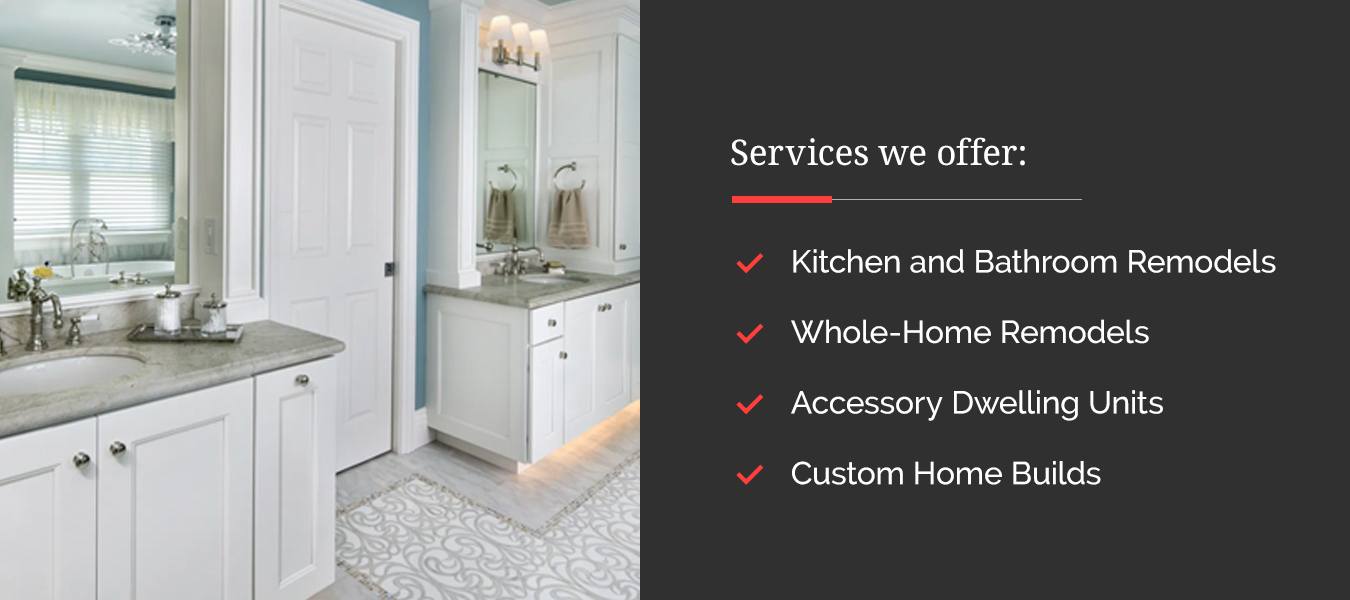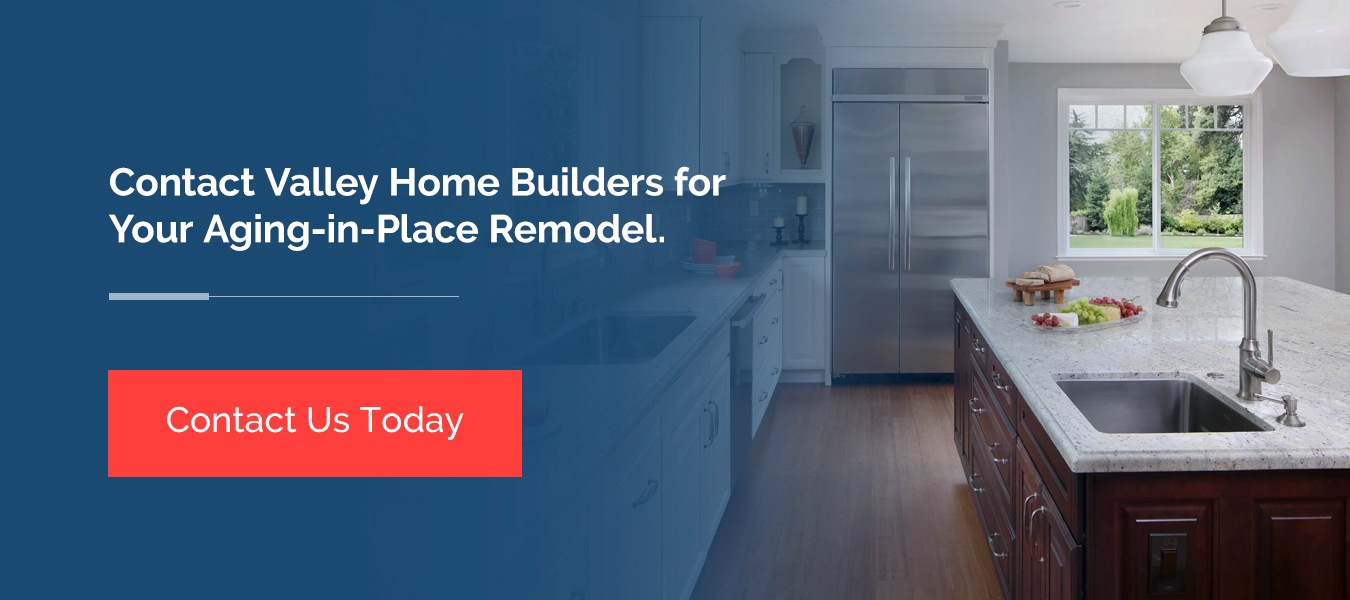Aging in place allows a person to live in their own home and community comfortably, safely and independently, no matter their ability, income or age. Aging in place design — or universal design—is a growing niche in the building industry. Long-term thinkers aim to ensure that they and their aging parents can remain in their respective homes as long as possible. Other homeowners seek to accommodate disabled persons or other individuals with mobility issues.
Whatever your reason for contemplating the inclusion of aging in place or universal design elements into your next home upgrade, at Valley Home Builders, we believe creating an accessible space is never a bad idea. On that note, we share with you an abbreviated list of some universal design ideas for your home’s interior. Some require more work than others, but all are worth considering before embarking on your home renovation.
Aging in Place and Universal Design
Here are some ways you or your loved ones can remodel your home to age in place. This list is by no means exhaustive but should offer you an idea of just some of the things required for proper aging in place and universal design.
- Widen all thresholds: According to the Americans with Disabilities Act of 1990 (ADA), all doorways, entryways and hallways should provide 32 inches of clearance space, but that’s at a bare minimum. Wheelchair sizes vary, so plan for more space instead of less to access each part of your house more conveniently. You can work with a contractor to figure out whether you need to move plumbing or electrical wiring. If you’re widening your entryway, consider upgrading to a lock with a keyless fob to get into your home more efficiently.
- Prepare for single-story living: Installing an elevator or functioning stair lift in a multi-level home is not always realistic. It’s more important for a home’s ground level to include access to all necessary living spaces. Consider converting an office into a bedroom or upgrading a half bath to a full bathroom.
- Install non-skid flooring: Slippery surfaces present a potential danger to anyone but can risk surgery and devastating injury for older adults. Replace slick walking surfaces with a material that provides sufficient tread. You may want to install cork, rubber, carpeting or slip-resistant vinyl around the house for cushioning and traction. This upgrade is essential for the bathroom or kitchen, where water often ends up on the floor.
Design a better bathroom: A curb-less, open shower or walk-in bathtub is necessary for any person with limited mobility. A built-in shower seat, hand-held shower headand grab bars — in the shower and by the toilet — will also go a long way in improving accessibility in the bathroom.
- Upgrade to lever handles: You may have pain in your hands from arthritis or lagging muscle strength that could make it difficult to open your doors and windows and turn on faucets. Replace round doorknobs and faucets with lever handles to ensure you can easily open all doors without the full use of both hands. The same rule should apply to cabinet fixtures. You might even want to consider updating your windows to include accessible handles.
- Remodel the kitchen: In addition to considering non-slippery floors and new cabinet handles, the best universal design kitchen should focus on flexibility. Install accessible cabinets that rely on pull-outs and lazy susans. They may need to be raised or lowered, depending on your specific needs. Likewise, the ideal countertops are height adjustable. And a section of kitchen space devoted to counters without cabinets beneath proves hugely helpful for those requiring wheelchair accommodations.
- Install better lighting: Making your home brighter can help prevent falls and other injuries. Since your vision changes as you age, you’ll want to make sure you have spacious areas that bring in natural light while reducing glare. Look around your house to find out where you could add natural and artificial light to make it brighter. You may also want to install a hands-free lighting system to make your home even more accessible.
- Build an ADU: Building an accessory dwelling unit provides a great alternative to completely modifying your existing residence. A new ADU can be built to fully support ADA living and can incorporate all of the listed items above. ADUs also offer the comfort and safety of living close to your loved ones while maintaining independent living areas.
How Valley Home Builders Can Help You Age in Place
As a design-build company, our team at Valley Home Builders can help you with your home remodel for aging in place. Here are some of the services we offer.
Kitchen and Bathroom Remodels
You’ll need to be careful as you use the kitchen and bathroom in your home because of the presence of heat and moisture in these areas. Remodeling your bathroom and kitchen is as simple as making these spaces more functional for you and your lifestyle. You can make your bathroom safer with a walk-in shower or tub with lower entry points to reduce the risk of falling. Our aging-in-place contractors can work with you to design your bathroom with more accessible features.
You can also make some changes to your kitchen for easier use. Should you ever need a wheelchair or walker later in life, you can have your cabinets lowered so you can easily reach your plates and non-perishables. You may also want to upgrade your dishwasher so you don’t have to bend over to load it. Our team at Valley Home Builders can help you choose the right appliances and layout for your new kitchen.
Whole-Home Remodels
Besides minor renovations such as the kitchen and bathroom, we also specialize in major projects such as room additions, home extensions and whole-house remodeling. As aging-in-place contractors, we know what upgrades and appliances would help you as you seek to make your living space more accessible. You can also be part of the process by using our home remodeling visualizer to choose aesthetic and functional materials for your kitchen, bathroom and living room.
Accessory Dwelling Units
Our team at Valley Home Builders could build an attached or detached accessory dwelling unit (ADU) on your loved one’s property. Consider working with our ADU builders to help save money on assisted living costs and have a separate living space from your family. As opposed to living in a nursing home or assisted living facility, you can be near your family members while also having a sense of independence.
Your relatives can take care of you and give you peace of mind that you’ll have consistent care. You’ll also be closer to your grandchildren to create fun memories with them as you age.
Custom Home Builds
If you’re looking for something bigger than an ADU, Valley Home Builders also offers custom new home construction. We can help you design and build a comfortable home that supports ADA living, including all the elements of universal design. Get peace of mind that you will have all the resources you need in your home to maintain your independence. With a custom home build from Valley Home Builders, you can age in place while maintaining the joy of owning your own home.
Contact Valley Home Builders for Your Aging-in-Place Remodel
We specialize in minor and major home renovations in the San Francisco Bay area. To learn more about our aging-in-place remodeling services and determine your specific needs, contact Valley Home Builders today.
 Design a better bathroom: A curb-less, open shower or walk-in bathtub is necessary for any person with limited mobility. A built-in shower seat, hand-held shower headand grab bars — in the shower and by the toilet — will also go a long way in improving accessibility in the bathroom.
Design a better bathroom: A curb-less, open shower or walk-in bathtub is necessary for any person with limited mobility. A built-in shower seat, hand-held shower headand grab bars — in the shower and by the toilet — will also go a long way in improving accessibility in the bathroom.

View Our Different Platforms: